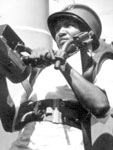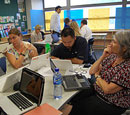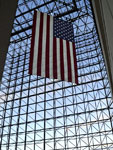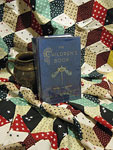African American History Month 2011


It's February! Resources throughout the web stand ready to provide you with lessons and primary source materials for Black History Month (also known as African American History Month), but African American history stretches far beyond the confines of one month and the narrative litany of a handful of cultural heroes. Maybe you want to go beyond Martin Luther King, Jr., Frederick Douglass, and Jackie Robinson. What stories can you uncover beyond the headlining stories textbooks provide? Remind your students of the complexity of African American history with these resources.
- The New York Times' lesson plan "Stories to Tell: Curating an African-American History Exhibit" introduces students to the difficulties in curating a large museum—or even just one exhibit. How can curators for the developing Smithsonian National Museum of African American History and Culture create a museum that honors all of African American history?
- Search the Carnegie Museum of Art's Teenie Harris Archive Project for photographs taken by photographer Charles "Teenie" Harris for the Pittsburgh Courier. Published from 1907 to 1965, the Courier was a major African American newspaper, and these photographs show Harris's journalistic perspective on Pittsburgh events of all scales. Use the keywords "Teenie Harris," along with others related to your topic of interest, to find images of life at school, home, community events, church, work, and out on the town.
- The Smithsonian National Museum of American History's Portraits of a City provides a similar photographic record of a place. The Scurlocks ran studios in DC for much of the 20th century, documenting African American life in the nation's capital.
- The Library of Congress's American Memory collection The African American Experience in Ohio, 1850-1920 focuses on the themes of slavery, politics, and religion. Its wide range of primary-source documents, including thousands of newspaper articles, can help students construct a view of just what the collection's title implies.
- High-quality photographs in the National Archives and Records Administration's "Pictures of African Americans During World War II" could give students a look into another kind of community—one that formed both overseas and on the home front during war.
 If none of these resources fit into your curriculum or spark your interests, there's plenty where they came from. Search our Website Reviews using the topic "African Americans," and you'll turn up close to 300 websites, on topics ranging from Marcus Garvey to the construction of race to Seattle's Black Panthers to sheet music by and about African Americans. Or test your African American history knowledge in our weekly quiz feature! You and your students can take online quizzes on African American baseball players and other athletes, the historical accuracy of the film Glory, Jim Crow laws, and foodways.
If none of these resources fit into your curriculum or spark your interests, there's plenty where they came from. Search our Website Reviews using the topic "African Americans," and you'll turn up close to 300 websites, on topics ranging from Marcus Garvey to the construction of race to Seattle's Black Panthers to sheet music by and about African Americans. Or test your African American history knowledge in our weekly quiz feature! You and your students can take online quizzes on African American baseball players and other athletes, the historical accuracy of the film Glory, Jim Crow laws, and foodways.
You can also explore the African American History Month pages of history and educational organizations, including:



